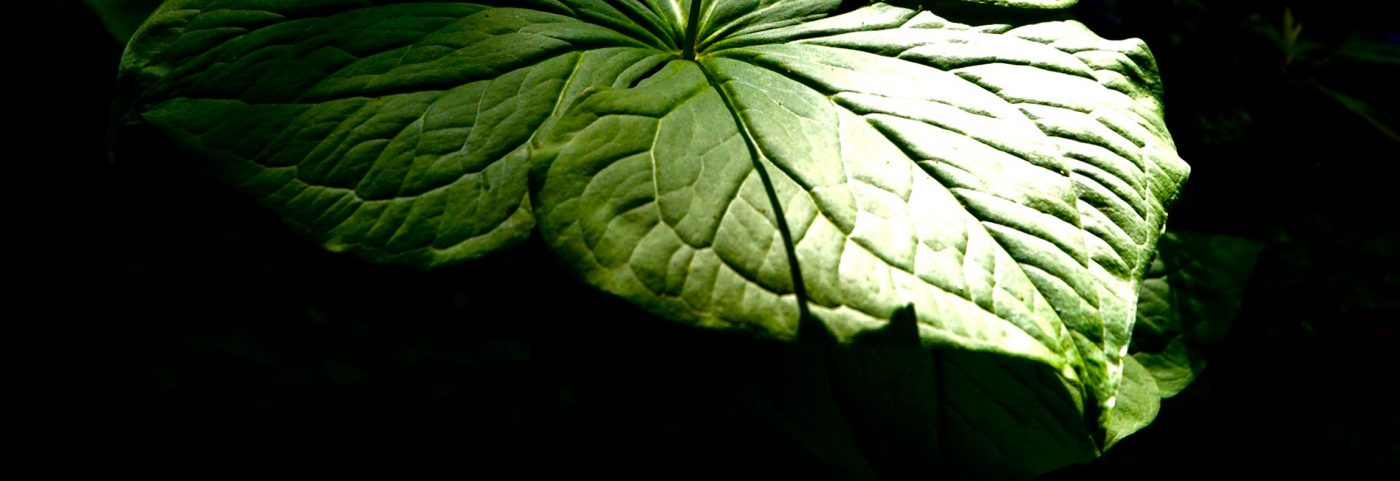
Trudging through the temperate forests of the far East or North America in Victorian garb with an impractical assortment of wooden sample cases may seem far removed from a trip to the modern garden centre. But it was on these very expeditions that the Europeans of the late 1800s brought back so many of the plants we now grow in our gardens.
It was on these trips that the great plant hunters of history had their eyes caught by plants never seen before at home. And in many cases not by showy summer flowers, but by delicate woodland plants, for it was here, in temperate forests they felt they may find success growing these plants in our far away climate.
Unusual shade plants are something we take great pleasure in, but are subtle in nature and always at risk of being overlooked – often literally – as many are low and unassuming at first. When looking at our gardens we must think like the great plant hunters: What wild lands share conditions with my garden? It may be the higher, cooler peaks or Mount Emei in China, or the forests of the Appalachians – and this is where many of our best shade plants come from. Let’s look at a few.
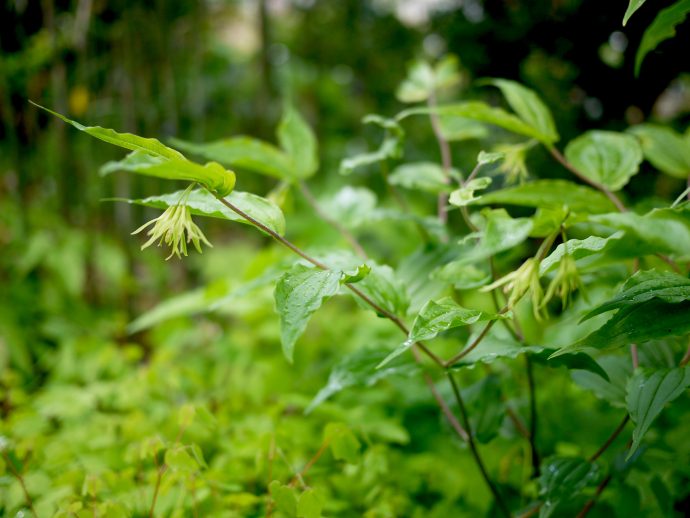
Disporum viridescens
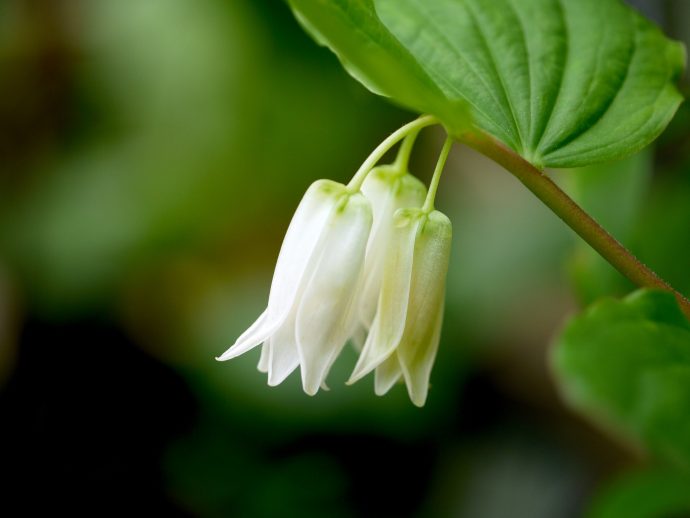
Disporum smithii
Disporums are directly related to the Salomons seal, a little more delicate and gracious, with large frilly dress-like flowers suspended below the foliage. Some species can grow to six foot tall and are evergreen.
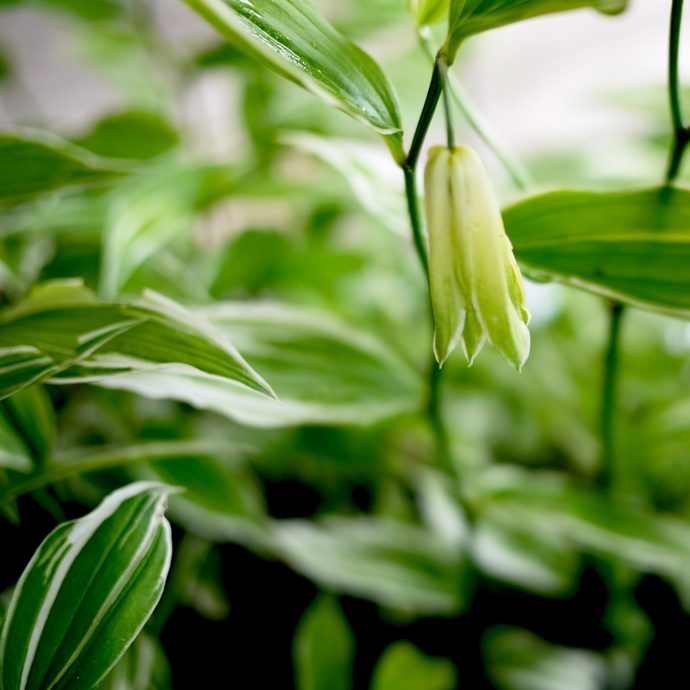
Disporum sessili Variegatum
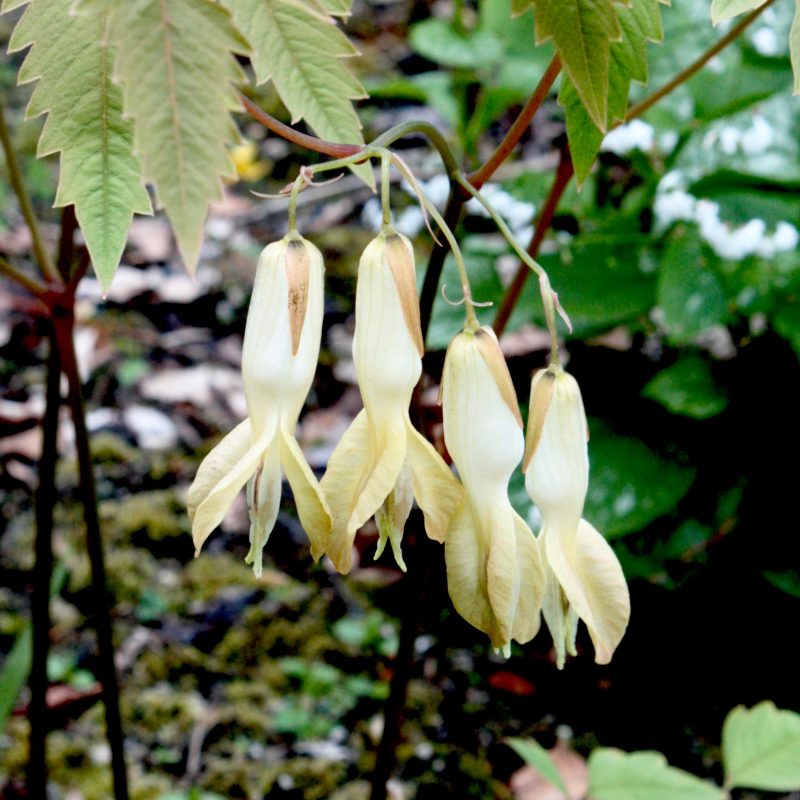
Dicentra macrantha
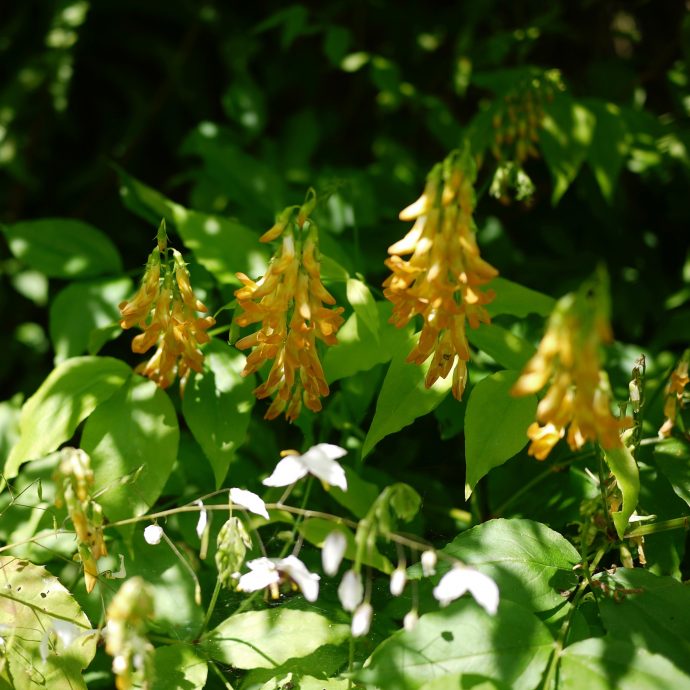
Lathyrus aureus
Dicentra macrantha (now Ichtyoselmis) is a relative of the familiar bleeding heart (Dicentra spectabilis) but a softer pale yellow and with a gentle arching habit. It’s rare and was a prized possession of the plant hunters, but grows happily in our humble back yards given some cool moist soil and dappled sunlight.
Another relative of a familiar plant is Lathyrus aureus. Instantly recognizable in flower as a type of sweet pea, it is a small bushy perennial of fresh green leaves and sprays of rusty yellow-orange pea flowers.
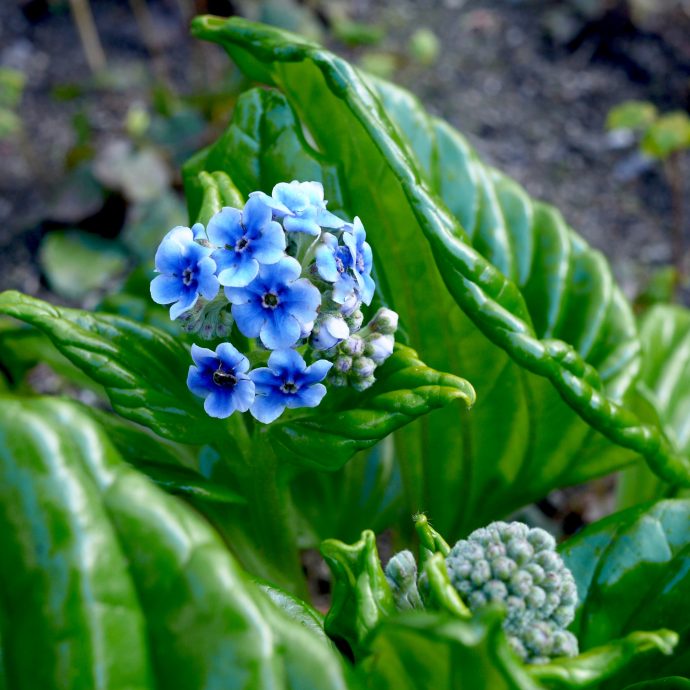
Myosotidium hortensia
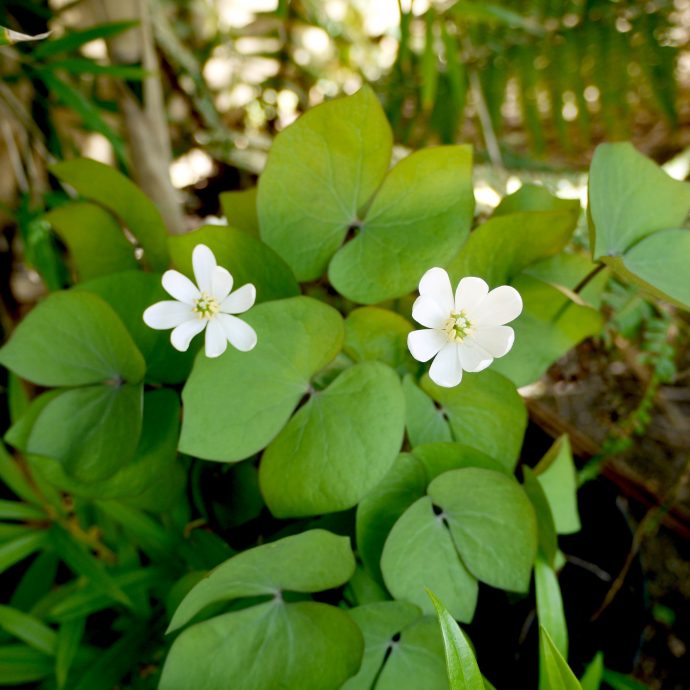
Jeffersonia diphylla
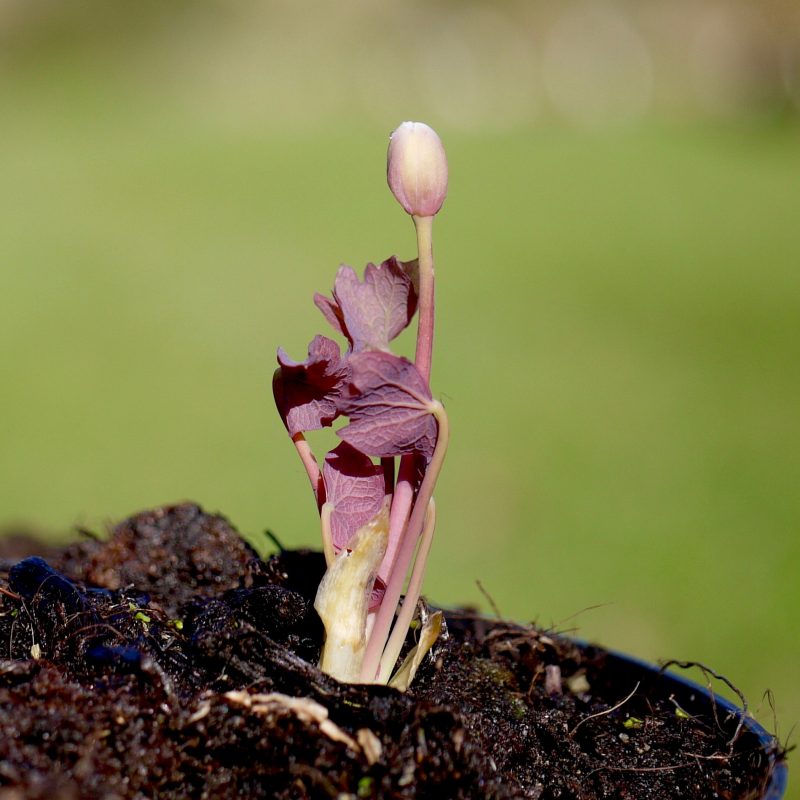
Jeffersonia unfolding
Myosotidium hortensia is known as the Chatham Island forget-me-not and is unsurprisingly native to that New Zealand owned archipelago. It looks very exotic, with large glossy green leaves and bold sprays of forget-me-not flowers, likes to be exposed to the elements as it grows in Tasmania on rich grassy slopes looking down to the sea.
Jeffersonia diphylla is a real jewel of the spring garden. Large deeply divided (diphylla – with leaves split in two) kidney shaped leaves emerge alien purple and fade to blue green and green as the perfect white daisy flowers begin to open. A plant which deserves much wider recognition.
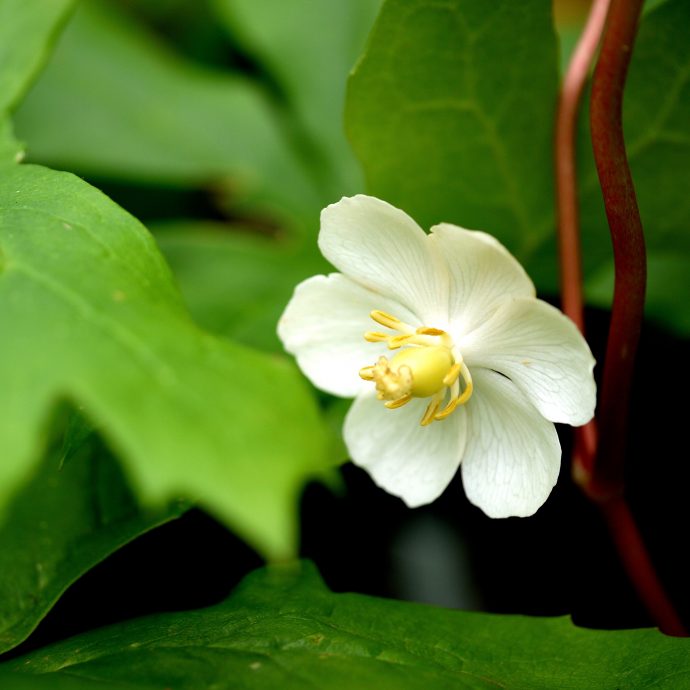
Schefflera taiwaniana
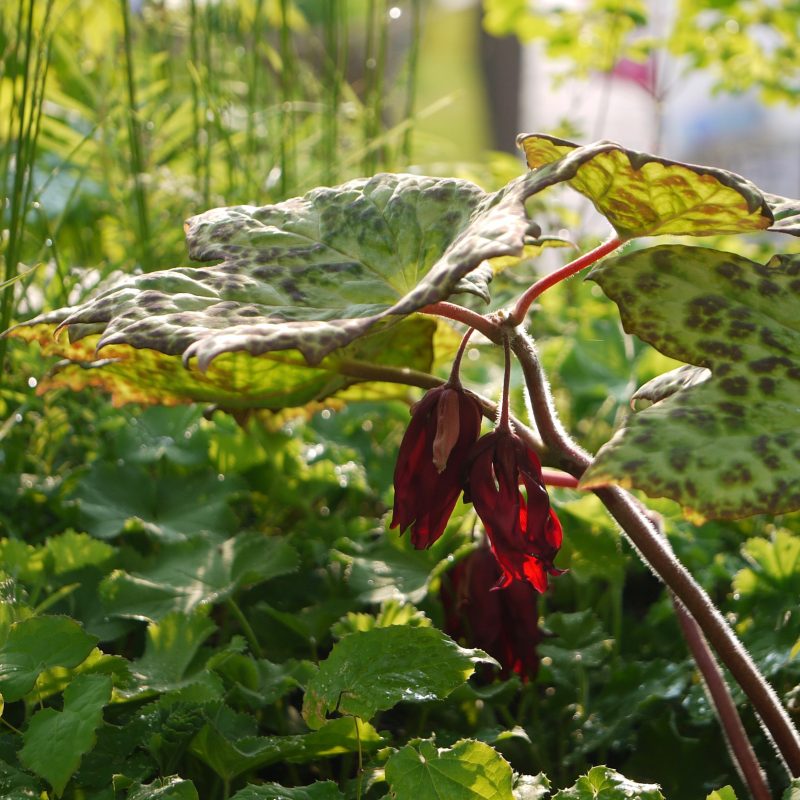
Podophyllum peltatum
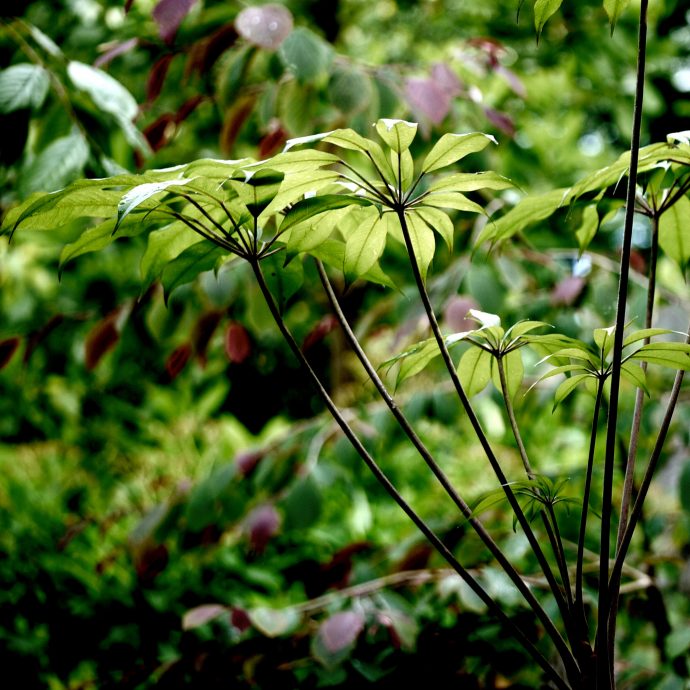
Podophyllum Spotty Dotty
For drama and big leaves, another easy exotic are the Podophyllums. Podophyllum peltatum is an American woodland native, spreads politely and has wonderful flowers and foliage, but is seldom seen in Irish gardens. Slightly better known thanks to the magic of a catchy name is Podophyllum ‘Spotty Dotty’ which produces saucer sized leaves in random shapes and patterns. A real treat to watch them burst assertively out of the ground.
It’s not all hands and knees stuff in the shade garden, though. Foliage shrubs, happy in plenty of shade, hardy in our winters, but making you look like you’ve taken a lot of trouble are not that hard to come by. Schefflera taiwaniana is arguably the easiest scheffy to grow in our climate and forms a branching shrub to 2m, sometimes more. Large finger like leaflets give wonderful texture to dappled shade and they are airy enough to underplant with some unusual shade perennials.
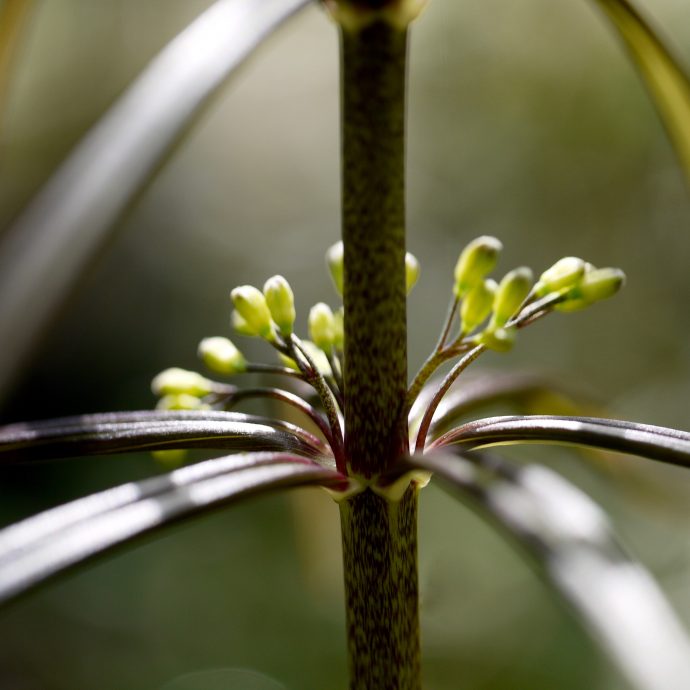
Polygonatum verticillatum
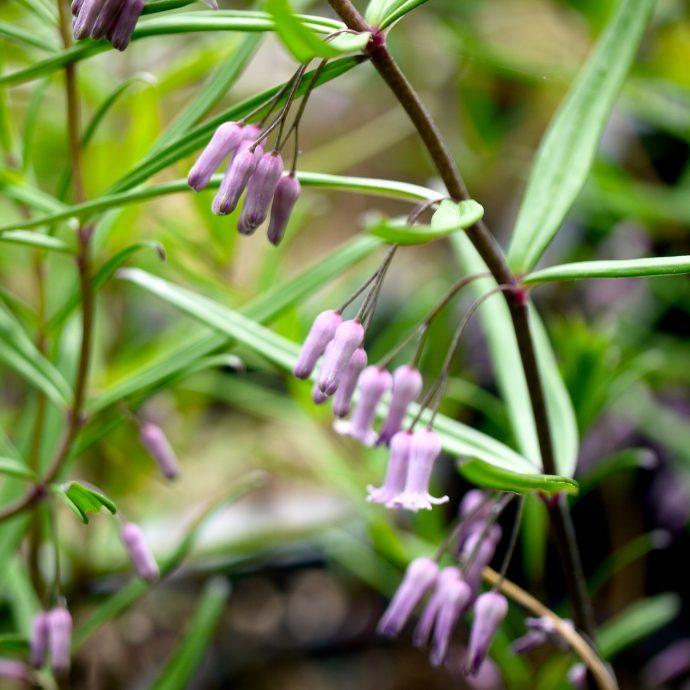
Polygonatum curvistyllum
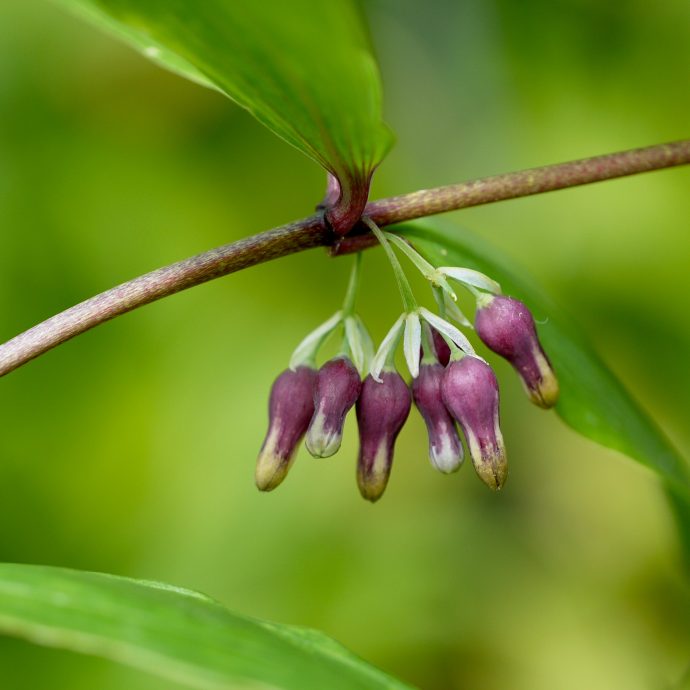
Polygonatum zanlanscianense
The final overlooked woodland star we’ll look at are the Solomon’s Seals. These represent a huge array of species, all of which tolerate our conditions very well indeed and can be seen in vast swathes in some of the better grand gardens, but perhaps look a little underwhelming in small pots which don’t hint at their startling potential. Polygonatum verticillatum as the name suggests emerges en masse like a missile barrage leaving a war ship. Bamboo like spears jut out of the soil growing to nearly 2m before arching over as very architectural statement. Delicate bell flowers soon hang from the whorls of slender leaves. These turn to bright yellow as the abundance of berries turn to red.
Much more diminutive but just as charming is Polygonatum curvistyllum. Like its larger cousin in miniature, it is a gorgeous shady ground cover with red stems setting off dark green leaves and bell shaped flowers of perfect lavender followed in Autumn by scarlet berries. It originated in China but is very at home here.
Polygonatum zanlanscianense features tall arching stems – shorter than P. verticillatum and much more refined than the common Solomon’s Seal. With clusters of small bell flowers clinging tight to the stems. It also has a very good name signifying its Chinese roots.
Even when the sun’s out we hope you’ll spend a little time admiring our rare and unusual plants. And we hope you soon will be just as excited by them as we are.
